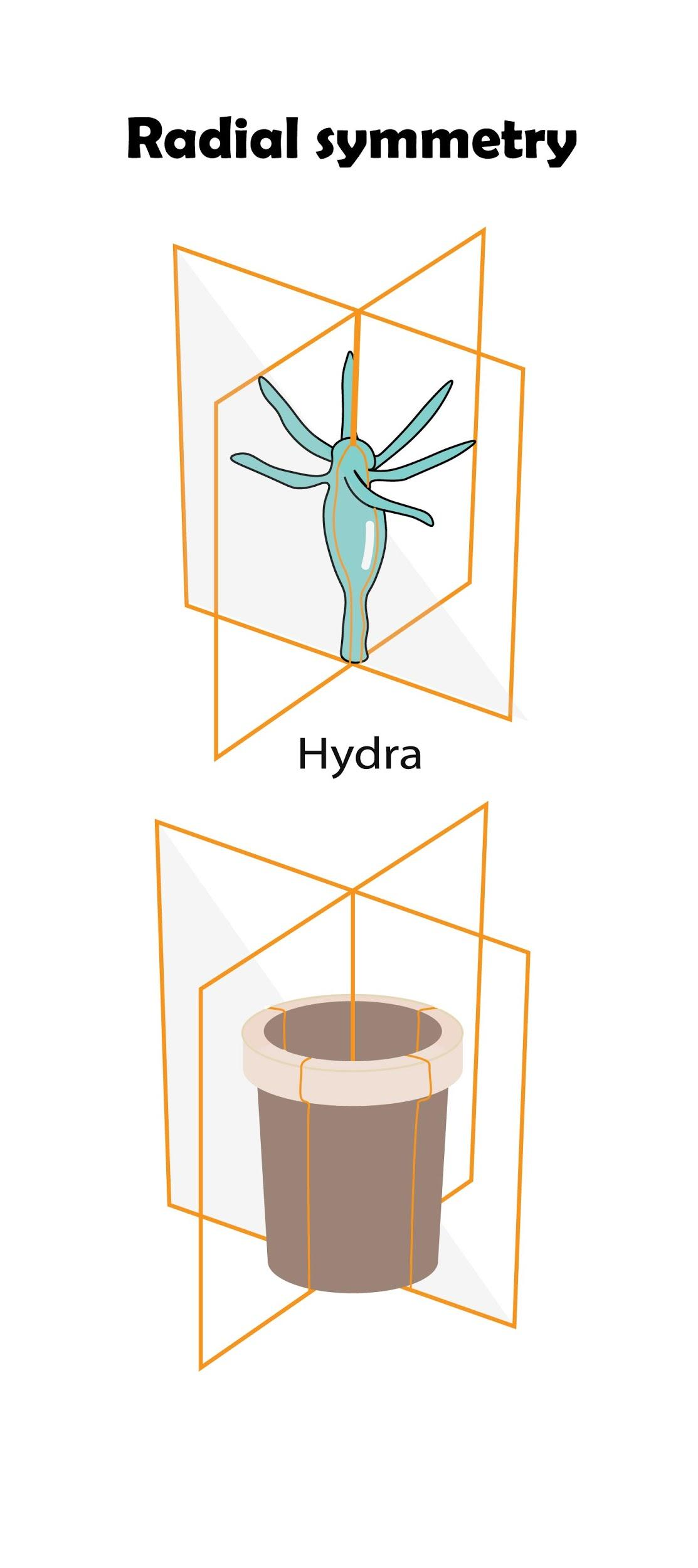
Which of the following is true about Hydra?
(a) Marine
(b) Bilateral symmetry
(c) Carnivorous
(d) All of the above
Answer
476.7k+ views
Hint: Hydra is found within inland freshwater systems in Europe, Asia, and America. Their body parts are arranged around a central axis like rays. Hydras are predatory organisms. They eat insect larvae, larval fish, worms, small crustaceans, and other invertebrates.

Complete answer:
Hydra is carnivorous. Hydras are small organisms and belong to the class Hydrozoa. They live in temperate and tropical regions. The body of hydra is around 10 mm long when extended. It possesses a simple adhesive foot called the basal disc. By using this foot they attach themselves to solid surfaces such as stones, twigs, or vegetation. The neural organization in hydra is composed of a simple network of neurons. It is believed that they do not die of old age. Instead, the body breaks into distinct pieces called fragments. Each fragment then grows into an adult capable of producing offspring. This mode of asexual reproduction is called ‘fragmentation.’ Hydra also reproduces by other asexual means like budding. Hydra belongs to the Coelenterata species i.e. it has an open body cavity, it is not a true cavity.
So, the correct answer is, ‘Carnivorous.’
Note:
- Hydra is a genus of freshwater organisms from the phylum Cnidaria. There are about 20 to 30 different species of hydra.
- The body of hydra is tubular and shows radial symmetry.
- Hydras can be described as carnivorous in their food habit.
- They make use of their stinging cells to stun, entangle, and kill their prey before eating it.

Complete answer:
Hydra is carnivorous. Hydras are small organisms and belong to the class Hydrozoa. They live in temperate and tropical regions. The body of hydra is around 10 mm long when extended. It possesses a simple adhesive foot called the basal disc. By using this foot they attach themselves to solid surfaces such as stones, twigs, or vegetation. The neural organization in hydra is composed of a simple network of neurons. It is believed that they do not die of old age. Instead, the body breaks into distinct pieces called fragments. Each fragment then grows into an adult capable of producing offspring. This mode of asexual reproduction is called ‘fragmentation.’ Hydra also reproduces by other asexual means like budding. Hydra belongs to the Coelenterata species i.e. it has an open body cavity, it is not a true cavity.
So, the correct answer is, ‘Carnivorous.’
Note:
- Hydra is a genus of freshwater organisms from the phylum Cnidaria. There are about 20 to 30 different species of hydra.
- The body of hydra is tubular and shows radial symmetry.
- Hydras can be described as carnivorous in their food habit.
- They make use of their stinging cells to stun, entangle, and kill their prey before eating it.
Recently Updated Pages
Glucose when reduced with HI and red Phosphorus gives class 11 chemistry CBSE

The highest possible oxidation states of Uranium and class 11 chemistry CBSE

Find the value of x if the mode of the following data class 11 maths CBSE

Which of the following can be used in the Friedel Crafts class 11 chemistry CBSE

A sphere of mass 40 kg is attracted by a second sphere class 11 physics CBSE

Statement I Reactivity of aluminium decreases when class 11 chemistry CBSE

Trending doubts
10 examples of friction in our daily life

The correct order of melting point of 14th group elements class 11 chemistry CBSE

Difference Between Prokaryotic Cells and Eukaryotic Cells

One Metric ton is equal to kg A 10000 B 1000 C 100 class 11 physics CBSE

What is the specific heat capacity of ice water and class 11 physics CBSE

State and prove Bernoullis theorem class 11 physics CBSE




